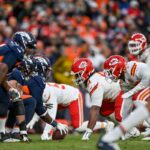“League of Denial” is not just a river in Egypt
“The threat that CTE poses is severe; and “League of Denial” speculates that every single NFL player may suffer from it. “
Read More …
I think Sandy Clough, a sports talk radio host at Denver’s 104.3 the Fan said it best when he said yesterday, “journalism won last night.” Wherever one stands on the issues confronted in the PBS Frontline documentary “League of Denial”, nobody would deny the quality of the investigative work that the program was born of. ESPN reporters Steve Fainaru and Mark Fainaru-Wada, authors of the book the presentation was based on, will be deservedly applauded for breaking the relative silence surrounding an issue that has affected, even ended, countless lives.
Nothing disclosed in “League of Denial” is a revelation. The long-term cognitive consequences of repeated impacts to the heads of football players and other athletes have been discussed before. TV programs like HBO’s “Real Sports” have told most of the individual stories within the new film at some prior time. The disease chronic traumatic encephalopathy (CTE), which cripples its victims by essentially “crystallizing” portions of their brains, has been the subject of several investigative pieces of the past few years but has never been examined as comprehensively as it was in “League of Denial”.
The documentary is typically “Frontline” in that it’s delivered impeccably. The way that it is shot, structured and edited makes “League of Denial” especially compelling. There’s nothing gimmicky about it. Even in the internet age Frontline continues to deliver news and information in a manner that is respectful of its viewers, unlike programs like “Nightline” which long ago made the switch to tabloid journalism. “League of Denial” is a triumph in terms of both reporting and documentary film making. It’s a film that will prove every bit as fascinating to viewers who do not watch football is it was to football fans.
For people who ingest the NFL on Sundays “League of Denial” provides more questions than it does answers. The concerns that arise regarding not only the significant blows to the head that players take, but the hundreds of repeated minor ones that occur on every play, are difficult to ignore. There exists a possibility that the danger to players will someday eliminate football as we know it today. The threat that CTE poses is severe; and “League of Denial” speculates that every single NFL player may suffer from it.
As significant as the risk appears to be for those who play football on Sundays, the danger is of even greater significance to those who play on Friday nights and on Saturday afternoons. The film should give significant pause to parents considering whether or not to let their children play football. One aspect of CTE research that “League of Denial” omitted, however, is the study of concussion recovery. Researchers are discovering evidence that young football players may be able to sidestep consequences if their brains are given adequate time to regenerate between impact. These studies could lead to sensible protocols that reduce the impact of CTE on the game of football. The film makes it clear that technology has not kept pace with the speed and brutality of the game. There’s hope that the awareness “League of Denial” leads to will help advance the science behind brain safety.
“League of Denial” is a compelling program for anybody to watch. For football fans it should be required viewing. Often we see the glamour of the game and fail to consider the sacrifice those who play it are making for our entertainment. Professional players are well compensated, of course, but there’s no putting a price on somebody’s cognitive awareness. It’s heart-breaking to know that men in their forties and fifties often end up dying with severe dementia because of what they left behind on the playing field.
For former players “League of Denial” must have been very difficult to sit through. It must have been an even tougher watch for parents of high school and college athletes. The risks of playing football are almost identical to the risks of boxing. The old term for “CTE”, as discussed in the film, was dementia pugilistica or chronic boxer’s encephalopathy. Muhammad Ali is the most famous sufferer of the disease. Americans watched his gradual slide into dementia and premature old age. His story is familiar enough that it’s not hard to understand the risks football poses.
The Chicago Bears will host the New York Giants tonight. The game will be broadcast nationally and seen my millions of viewers. It will be the first NFL game in the post-“League of Denial” era. Tomorrow night high school stadiums across the USA will be filled with cheering fans and, on Saturday morning, ESPN’s “College Gameday” will tease all the football action on the slate. America will go on enjoying football, but with the idea in the back of its mind that something is going to need to change.
The role of journalism is to report and to make people think. The makers of “League of Denial” accomplished those things.





